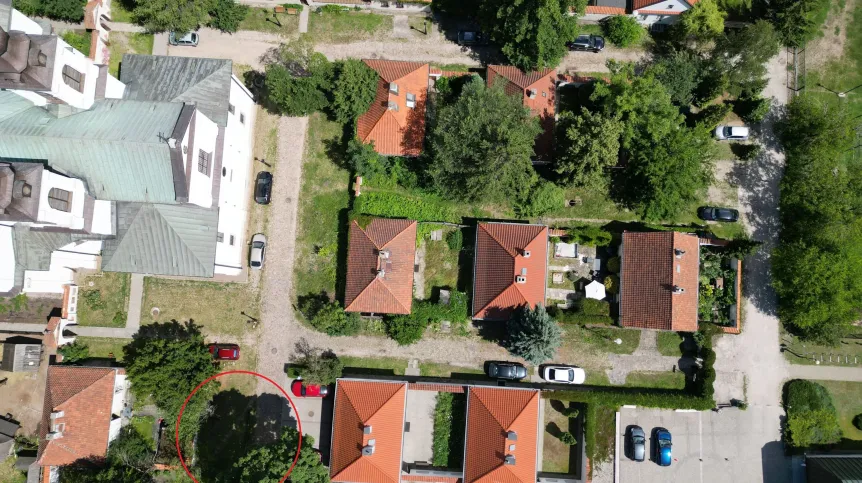
Thanks to ground-penetrating radar, the remains of the enigmatic hermitage were located in the Camaldolese monastery complex in Warsaw's Bielany district. Excavations are planned for next year, says Professor Fabian Welc from the Cardinal Stefan Wyszyński University.
'The Warsaw hermitage in Bielany is one of the oldest and best-preserved Camaldolese monastery complexes in Poland. Its foundation dates back to 1634, when, shortly after the capture of Smolensk, King Władysław IV vowed to found a monastery as a votive offering for the victory over the Russian army. The king intended the monastery to also have a symbolic and propaganda function, in other words, to be an 'eternal monument to victory', paying tribute to the triumph of the Polish army and the king himself', says Dr. Karol Guttmejer, a researcher of baroque architecture.

The arrangement of hermitages, or monks' dwellings, in the Bielany monastery had a strict and hierarchical order. The first hermitages were built thanks to influential founders, which testifies to the role of the monastery among the elite of the Republic of Poland at that time. The most important and oldest hermitage was founded by King Władysław IV himself, while the others were founded by Primate Maciej Łubieński, Bishop Charles Ferdinand Vasa and Chancellor Jerzy Ossoliński, among others.
'It was a conscious decision that made the arrangement of the hermitages reflect the political hierarchy of the Republic of Poland', adds Dr. Guttmejer.

There is, however, a gap in this unusually orderly row of hermitages - an unexpectedly empty space. This symbolic 'missing link' has long intrigued historians.
A few years ago, Dr. Guttmejer proposed that this empty space was intended for Vice-Chancellor Hieronim Radziejowski - an influential and controversial figure. Radziejowski, entangled in a political conflict with King Jan Kazimierz, was sentenced to banishment in 1652 for treason, and his name was covered with infamy. This symbolic exclusion was most likely transferred to the level of architecture: the place where his hermitage would stand remained undeveloped, or the building was demolished as a sign of permanent excommunication and a warning to future generations.
Other researchers assumed that the empty space in the Camaldolese monastery could have been a kind of homage paid to the young son of Władysław IV, Prince Sigismund Casimir. The boy died tragically in 1647, at the age of seven.
In order to solve the mystery of the missing hermitage, in 2024 GPR research was carried out in the area under the supervision of Professor Fabian Welc from the Institute of Archaeology of the Cardinal Stefan Wyszyński University.
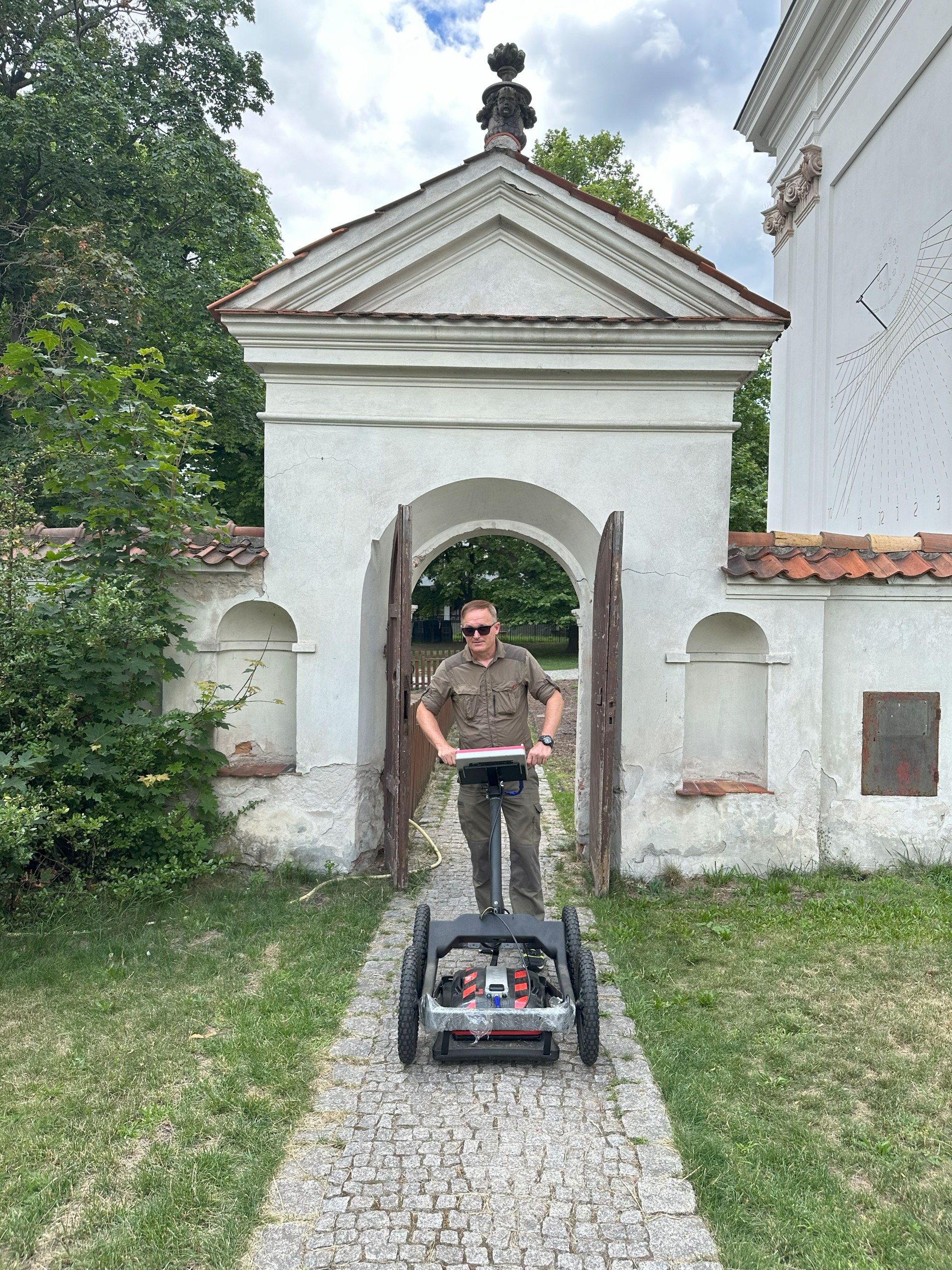
'The results were surprising, geophysical profiling revealed the foundations of a most probably unfinished or partially demolished hermitage under the empty square', says Professor Welc. 'The geophysical survey revealed underground relics of a previously unknown hermitage, most probably in the form of stone and brick foundations, in the only previously undeveloped place'.
The obtained geophysical images clearly show the outline of a rectangular building measuring approximately 5x7 meters, which matches the dimensions of the hermitages preserved to this day in the Bielany monastery complex.
"The monks' houses had dimensions adapted to the ascetic lifestyle of the Camaldolese. Each of them was built on an almost identical rectangular plan and consisted of a room for meditation and sleep, which provided the monastic hermits with conditions of complete isolation, in accordance with the requirements of the Camaldolese rule', adds Professor Welc.
Unfortunately, neither the founder nor the time of the hermitage construction can be determined based on non-invasive research alone. Next year, researchers plan to conduct excavations to obtain historical material that will allow the enigmatic building to be restored to the map of the history of the Bielany monastery and the history of Warsaw.
PAP - Science in Poland
ekr/ agt/ kap/
tr. RL
Gallery (10 images)
-
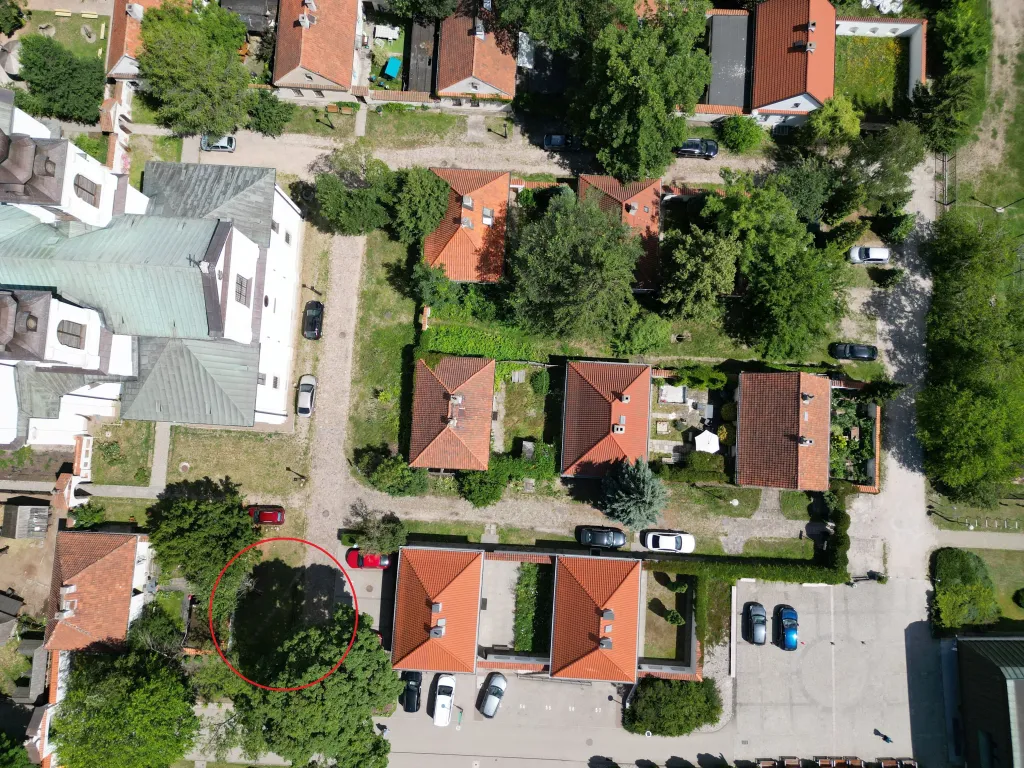 1/10Aerial view of the monastery complex in Bielany. The red circle marks the research area, the only undeveloped place. Credit: F. Welc.
1/10Aerial view of the monastery complex in Bielany. The red circle marks the research area, the only undeveloped place. Credit: F. Welc. -
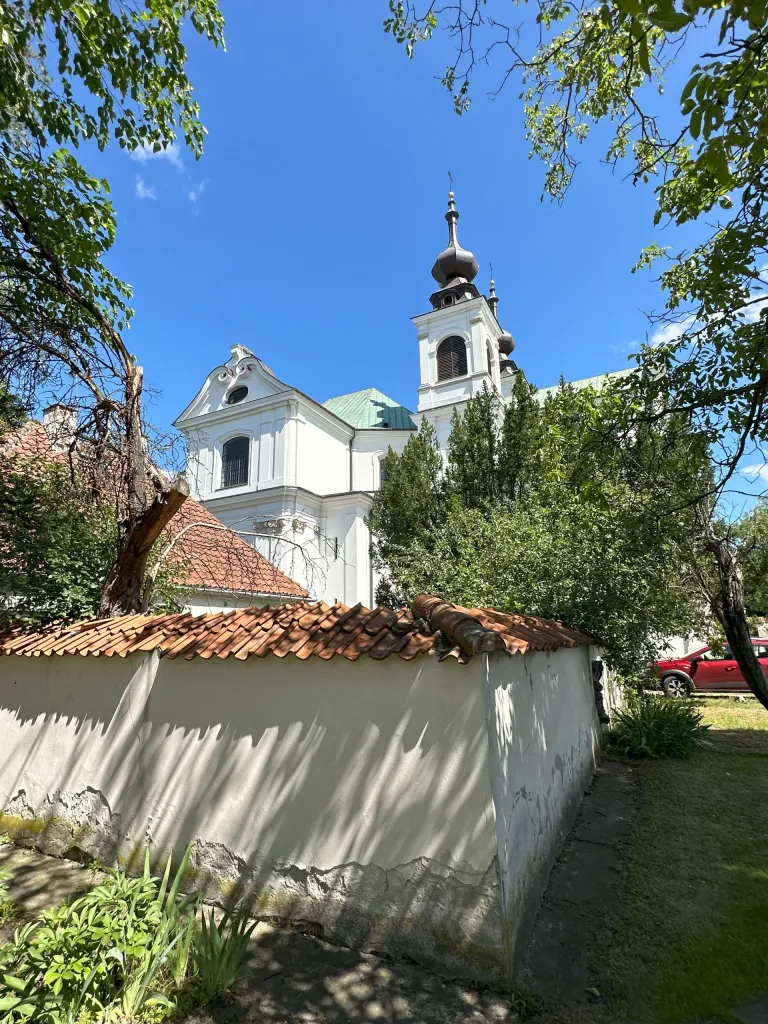 2/10Camaldolese monastery in Bielany. Credit: F. Welc
2/10Camaldolese monastery in Bielany. Credit: F. Welc -
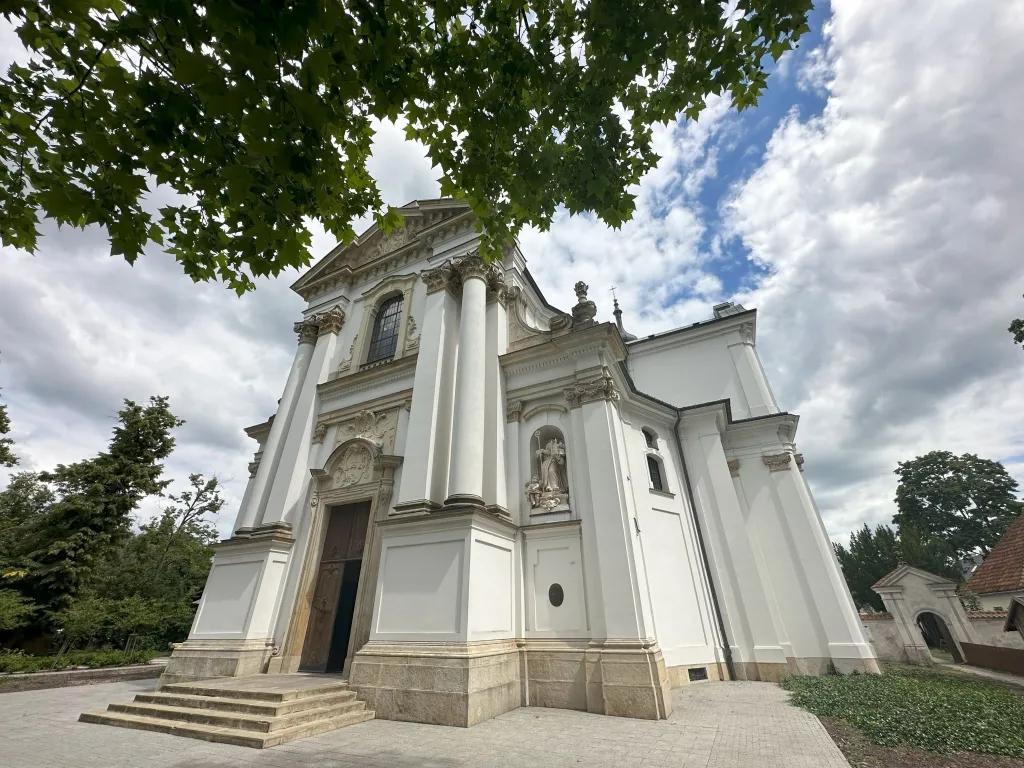 3/10Church of the Immaculate Conception of the Blessed Virgin Mary, St. Joseph and St. Ambrose. 17th century. Credit: F. Welc
3/10Church of the Immaculate Conception of the Blessed Virgin Mary, St. Joseph and St. Ambrose. 17th century. Credit: F. Welc -
 4/10Hermitage in the Camaldolese monastery complex in Warsaw's Bielany, one of the 13 preserved. Credit: F. Welc
4/10Hermitage in the Camaldolese monastery complex in Warsaw's Bielany, one of the 13 preserved. Credit: F. Welc -
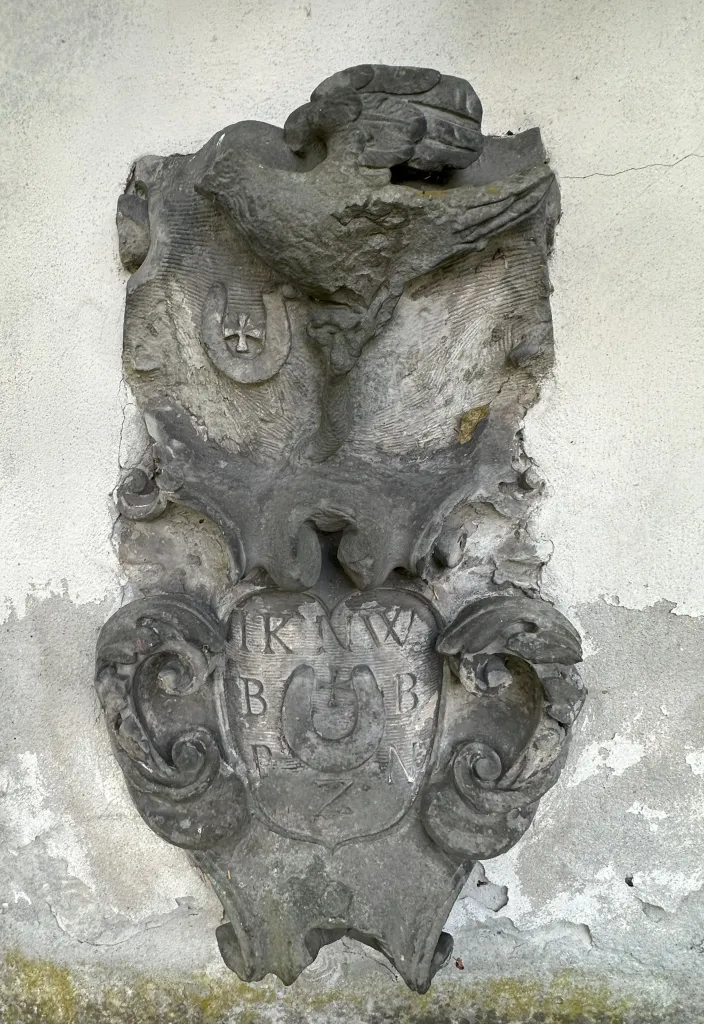 5/10The founder's coat of arms preserved on one of the houses. Credit: F. Welc
5/10The founder's coat of arms preserved on one of the houses. Credit: F. Welc -
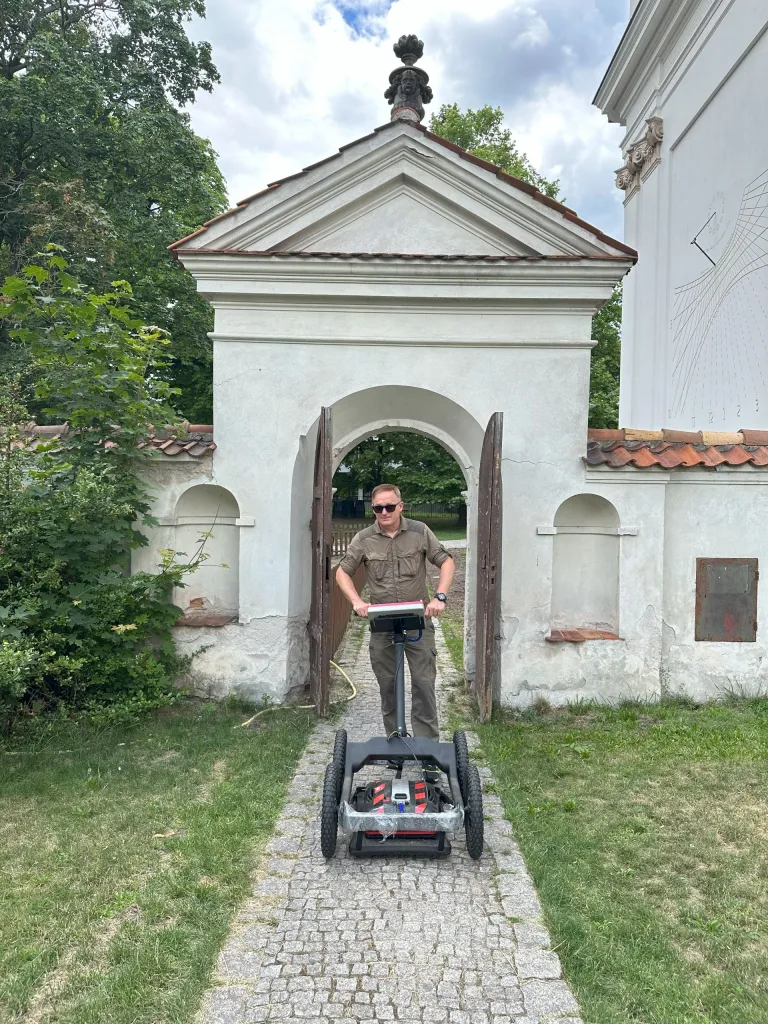 6/10GPR profiling conducted by Professor Fabian Welc. Credit: K. Guttmejer.
6/10GPR profiling conducted by Professor Fabian Welc. Credit: K. Guttmejer. -
 7/10Undeveloped area in the monastery – the target of geophysical research. Credit: F. Welc
7/10Undeveloped area in the monastery – the target of geophysical research. Credit: F. Welc -
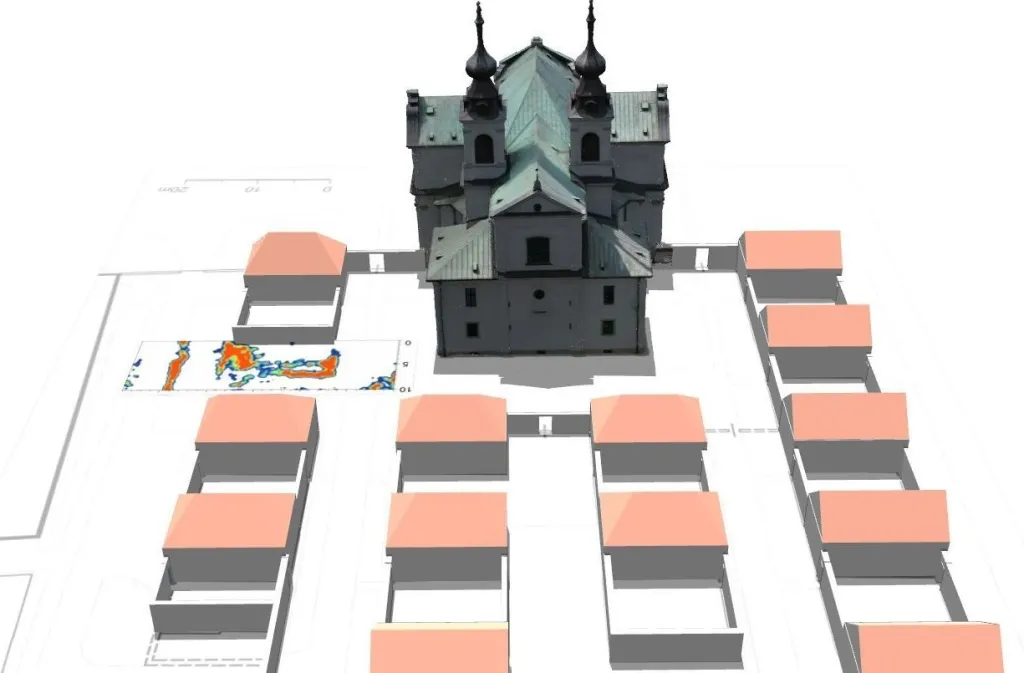 8/10Model of the monastery complex integrated with the results of geophysical profiling. Visible remains of one of the hermitages revealed during the research in the form of a depth map (time slices).
8/10Model of the monastery complex integrated with the results of geophysical profiling. Visible remains of one of the hermitages revealed during the research in the form of a depth map (time slices). -
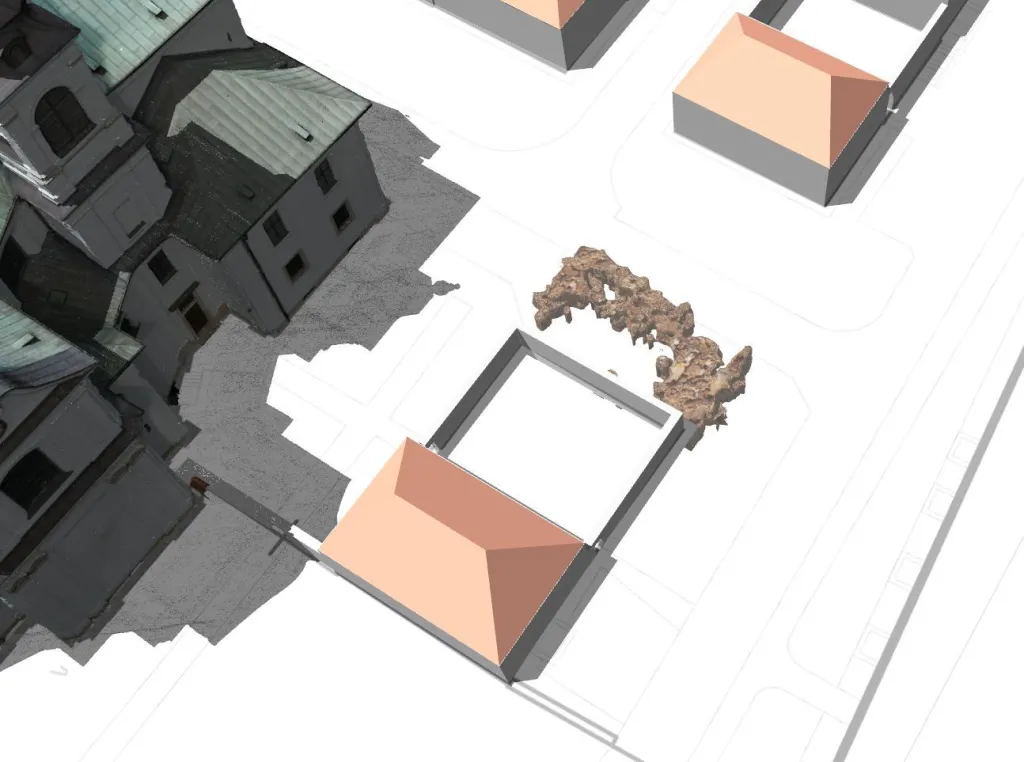 9/10Plan and model of the monastery complex with the results of geophysical profiling. Visible remains of the foundations of one of the hermitages revealed during the GPR research in 3D format. Credit: F. Welc
9/10Plan and model of the monastery complex with the results of geophysical profiling. Visible remains of the foundations of one of the hermitages revealed during the GPR research in 3D format. Credit: F. Welc -
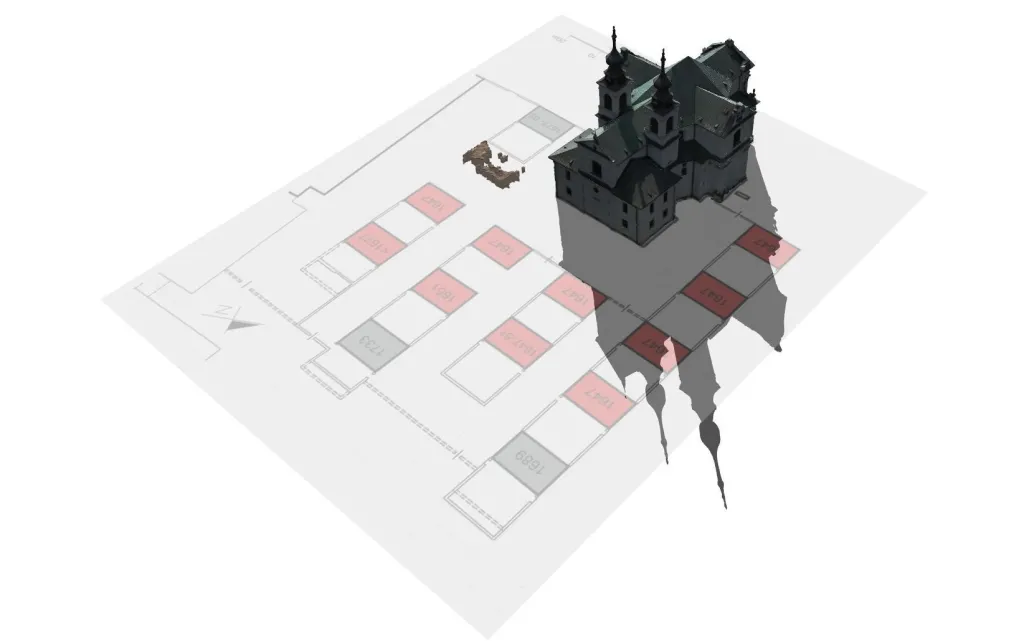 10/10Plan and model of the monastery complex integrated with the results of geophysical profiling. Visible remains of the foundations of one of the hermitages revealed during the GPR research in 3D format. Credit: F. Welc, K. Guttmejer
10/10Plan and model of the monastery complex integrated with the results of geophysical profiling. Visible remains of the foundations of one of the hermitages revealed during the GPR research in 3D format. Credit: F. Welc, K. Guttmejer













